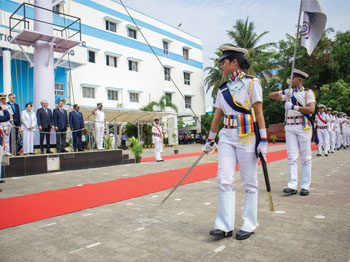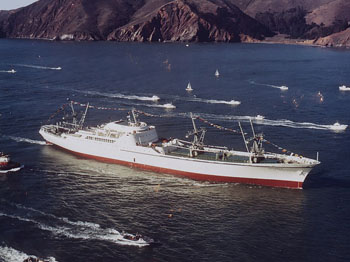The Academy’s 16th President
Growing up on Bailey Island in mid-coast Maine, Craig Johnson ’91E was never far from the water. With generational relationships to fishing and sailing, it was not only a pastime but the foundational connection to a livelihood unlike any other. His immediate and extended family shared this love of the sea and sailboat racing. As a college student, Johnson brought members of the Academy to the islands to show them how fond he was of the Harpswell area, visiting the Bailey Island General Store and Cook’s Lobster House, built by his uncle.
A career on the water outside of fishing was not something Johnson initially imagined. His interest in Maine Maritime Academy arose as a result of the success of neighbors and friends who were alumni. As his high school career wound down, his enthusiasm for the challenge that lay up the coast grew; for a tenacious teenager who loved nothing more than being on the water, he was sold.
...Read More-
 Serving on the International Executive BoardThe Academy Returns to a Prominent Role within IAMU
Serving on the International Executive BoardThe Academy Returns to a Prominent Role within IAMU
...Read More -
 The Academy's Nuclear RenaissanceThe return of the nuclear engineering program
The Academy's Nuclear RenaissanceThe return of the nuclear engineering program
...Read More
